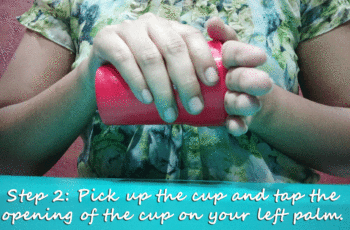Paithani is one of the most beautiful sarees in the world. Every women dreams of having at least one Paithani saree. No Maharashtrian wedding is complete without Paithani. Paithani resembles the rich Maharashtrian culture and tradition because it was once wore only by the royals. However, with passage of time Paithani has lost its charm. A real Paithani is hand woven and made of very fine silk, making it one of the riches sarees in India. But, now-a-days one can easily find many fake or duplicate Paithani sarees in market available at a very low cost. These sarees appear exactly like a real Paithani saree making it difficult for the customer to identify its genuinity. So, here is Complete Paithani Guide: Paithani History, Paithani Types, Care and How to identify fake and real Paithani.
Yeola Paithani
Paithani Guide – Paithani History
The art of making Paithani is more than 2000 years old and dates back to Satvahana Dynastry. It is said that paithani has its roots in the city called Pratishtan now known as Paithan (which falls in Marathwada about 50 km from Aurangabad). At that time, the city of Pratishtan was a trade center for silk & zari (gold yarn) & even exported cottons & silks to the Roman Empire. This is how Paithani got its name from the city.
Around 17th Century Mughal emperor Aurangzeb also encourages & patronized the art of weaving Paithani sari. The ‘Aurangzebi’ designs were specially developed for him. These designs are even famous today. After Mughals, the Great Madhavrao Peshwe carried forward the tradition of encouraged this art. Madhavrao Peshwe, had special motifs & color combinations designed exclusively for himself. Other Under the Peshwa patronage, a small town of Yeola, near Nashik, became as important as Paithan. It was the Peshwas who encourages a feeling of pride in Paithani among Maharashtrians.
Latter, the Nizam of Hyderabad became the Paithani admirers and special motifs were created for them. However, with the advent of British Raj the art of the Paithani suffered a setback. But the weavers from Yeola kept this art alive by developing their own weaving techniques. Slowly the craftmen from Paithan too migrated to Yeola. It is because of this dedication and faith of weavers that this tradition has is alive for past 2000 years. Today, Yeola has become the main center for Paithani weaving, although the sari has still retained the name that it derived from its birthplace. So if you are travelling to Shirdi don’t forget to visit Yeola (Yeola is around 30 km from Shirdi) for buying Paithani.
Uniqueness of Paithani
The paithani sari is known all over the world over for its uniqueness. Paithani is a hand woven silk sari with a rich, ornamental Zari (gold thread) pallav and border. What really sets the Paithani apart is its unique weaving technique. The entire process, from dyeing of the yarn to weaving, is done by hand. Hand looms are used to weave the main body of the sari. The weaving process of the Pallav & borders is similar to the tapestry weaving technique (one of the most ancient weaving techniques in the world). And because of this specialness of the sari, the silk that is used is extremely fine & delicate. The process of creating designs & motifs is also unusual. The motifs are created by interlocking & tying the colored threads to the warp (lengthwise threads) on the loom. In fact, the reverse side of the design is almost identical to the top side. These patterns literally seem as if they have been inlaid into the main fabric.
Paithani Guide – Paithani Types
Paithani is classified based on the motif, weaving and color.
A. Classification by motif:
- Bangadi Mor – Bangadi means bangle and mor means peacock. So bangadi mor means a peacock in a bangle or in a bangle shape. The motif is woven onto the pallu, the design sometimes having a single dancing peacock.
- Munia brocade – Munia means parrot. Parrots are woven on the pallu as well as in border. Parrots are always in leaf green colour. The parrots in silk are also called tota-maina.
- Lotus brocade – Lotus motifs are used in pallu and sometimes on the border.
- Tissue Border – This is a traditional form of Paithani. Paithanis having tissue border have different designs on Pallu like peacock, lotus, parrots etc.
- Balgandharva Paithani – This Paithani has meenakari butti all over the saree.
B. Classification by weaving:
- Kadiyal Paithani – Kadiyal means interlocking. The warp and the weft of the border are of the same colour while the body has different colors for warp and weft.
- Kad/Ekdhoti – A single shuttle is used for weaving of weft. The color of the warp yarn is different from that of the weft yarn. It has a narali border and simple buttis like paisa (coin), watana (peas), etc.
C. Classification by colour:
Kalichandrakala (pure black sari with red border), Raghu (parrot green coloured sari), Shirodak (pure white sari)
D. Other methods of Classification
- Tissue border Paithani – This is Paithani with traditional tissue border.
- Brocket Paithani – These are Paithani with Brocket. The cost of Paithani increases a the size of brocket increases.
Paithani Guide – How to identify real and duplicate (fake) paithani
- The real Paithani sarees are handwoven so no two sarees look exactly the same. The designs might look similar, however due to manual weaving process each saree is unique. On the contrary, you will find thousands of same pieces of a machine made Paithani sarees readily available since they are mass produced.
- Look at the reverse side of the Paithani handloom saree especially the pallu. The reverse side of a genuine Paithani saree will looks exactly the same as its top side.
Front and Reverse side of Handoven Paithani looks exactly the same.
A fake Paithani will have a web of thread on the reverse side.
Reverse side of Machine made Paithani has mesh of threads
- Genuine (real) Paithani saree are usually available only in basic colors since the threads are dyed in natural dyes. But machine made paithani are available in innumerable of colors.
- Due to the use of natural dyes and colors as well as use gold and silver thread, a real Paithani saree is a lot heavy and requires a lot more care than the cheaper machine made saree.
- The machine made Paithani sarees are a lot cheaper because they are mass produced and can be made in less than 15 days. However, to weave a real Paithani saree can take months and sometimes even more than an year depending on the design.
Paithani Care:
- Store the Paithani saree in Muslin cloth.
- Do not use naphthalene balls or chemicals.
- Do not spill any liquids.
- Never use plastic or regular cardboard boxes to store.
- Provide good air circulation in storage.
- Change folds after every use.
- Protect from damp weather specially monsoon.
In Nutshell
Paithani is one of the most loved Saree. No Maharastrian wedding is complete without a Paithani. However over passage of time Paithani has lost its charm. Now-a-days many Fake Paithani are available in market at a cost of real Paithani.
Here is a video on Paithani Saree – Types, it’s Cost and How to Identify a Fake and Real pIthani



Mallikaa Keshab Chander
I would like to know who is the manufacturer of real silver and gold zari Pathani sarees.In Yeola I found out that they use half fine zari.I want my saree to be done in real zari
Ashwini
Thanks for your input regarding Yeola. You can contact Kapse Paithani and check with them.